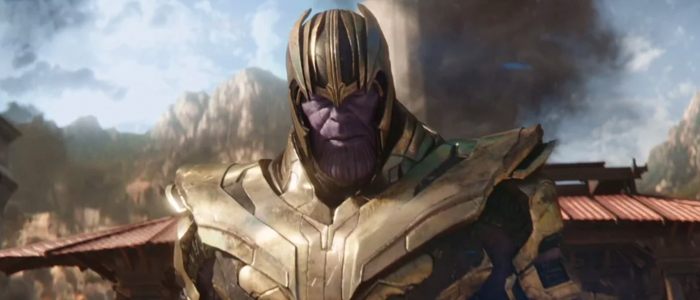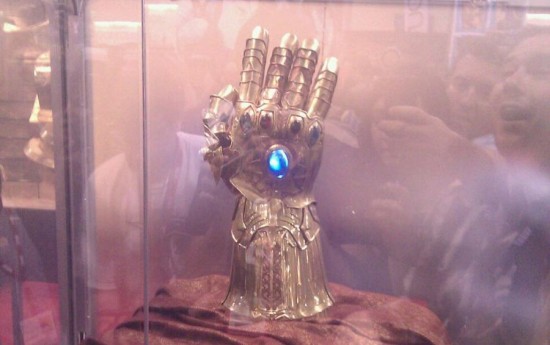‘Avengers: Infinity War’ Has a Few MCU Continuity Errors – Let’s Nitpick Them
While Avengers: Infinity War is a badass film worthy of breaking box office records, it also makes some changes to the continuity of the Marvel Cinematic Universe that don’t quite line-up with the story that has preceded it. In fairness to our nitpicking Comic Book Guy side, we thought it might be worth pointing out where the story diverts a bit from its previously established cinematic canon.
Gamora’s Backstory is Altered Slightly
In the 2014 film Guardians of the Galaxy, Gamora reveals her backstory in an intimate moment with Peter Quill:
“He’s not my father. When Thanos took my home world, he killed my parents in front of me. He tortured me, turned me into a weapon.”
You might remember that, in the trailers and marketing, John C. Reilly’s Nova Corps character Rhomann Dey mentions that Gamora is the “last surviving member of her species.” The dialogue is different in the film, where Dey explains that she has been “surgically modified and trained as a living weapon” after being adopted by “the Mad Titan, Thanos.”
Some of this doesn’t line up. According to what we see in Infinity War, Gamora’s species, the Zehoberi, were not all annihilated by Thanos. The Mad Titan “reasonably” only killed off half of the population. Gamora didn’t watch her parents get killed in front of her (as far as we know). Instead, Thanos distracted her as the mass slaughter took place. Thanos mentions the Zehoberi as an example that proves his 50/50 equasion right, as the planet became a paradise after his genocide.
Now there are some slight holes in our nitpicking here – it is never said on screen in the Marvel movies that Gamora is the last of her species, as that was only a line used by Rhomann Dey in most of the trailers and marketing. But that story is widely accepted as her backstory in not only the comics, but the movies until now. It was even used in promotional featurettes and interviews to promote the film.
This is a very slight continutity nitpick, but demonstrates that while Marvel has things planned out for the future, they are always making adjustments in order to tell the best story possible.
The Legend of the Infinity Gauntlet
As you may recall, an easter egg in Thor introduced the Infinity Gauntlet in Odin’s throne room. This was meant as a fun nod to fans, but as The Avengers came together on screen and Joss Whedon wrote that infamous end credits scene featuring Thanos, it started to become clear that Marvel was drawing a roadmap to Infinity War.
Of course, fans became obsessed with the Gauntlet in Odin’s Vault, forcing Marvel to address it. In Thor: Ragnarok, we see Cate Blanchett’s Hela raiding Odin’s vault. She comes across what looks to be the Infinity Gauntlet, and knocks it over, proclaiming it to be a “fake!” When I talked with Marvel Studios head Kevin Feige in November 2017, he spoke about the challenge of explaining this easter egg out of existence:
Going all the way back to Phase One, where Infinity War was a barely a glint in our eye, we were working on Avengers and trying to get just put that all together for the conclusion of Phase One. And it’s in one shot. It’s in one shot in the background. But now people have that pause button and 4K televisions. And also, it was on display, I think at Comic-Con. In the Marvel booth. And pretty quickly after that, within a couple years, we were like, well that’s clearly not the Gauntlet. The Gauntlet can’t be in there. And we had an internal Marvel theory that it was fake. That Odin who you’ve seen in the other films and who’s a… I guess a good father. He’s kind of an okay father. Kind of fosters the rivalry. As we learn in this movie, he vanished his firstborn daughter because he sort of got what he needed, he got to the top of the Nine Realms and it was like oh, this is much too violent. And Hela says, glad to have it, ashamed of how we got it. And we see that mural in the movie of [how] it was not a pleasant history of how Asgard got all that gold. So Odin has a history of doing what he wants to do to maintain power. And going back, I mean, now it’s probably five years ago we started again just in our internal creative group saying, “Well, it’s fake.” Because if the Asgardians knew that there was something that had that kind of power, that could theoretically wipe out Asgard and whatever else with a, in the comics, a literal snap of the fingers. They might question Odin’s ability to protect them. So Odin put a fake and he goes, it’s fine, I got it. Look, it’s fine, it’s in our vault, don’t worry about it. And it’s not until Hela goes down there. It was fun being back in that vault, by the way, for the first time since Thor 1. It was just the opportunity to call it a fake. So for people like yourself, and like all of us at Marvel Studios who were paying attention, that answers that question. And for people who have no idea that an out-of-focus Infinity Gauntlet appeared in the back of Thor 1, it just showcases her knowledge and her sort of disgust with the way Odin had handled things on her way to the true power that is below the surface.
The explaination is perfect, as it’s funny and explains away a plot hole. But taking an easter egg that could only be seen by the sharpest of eyes and expanding it into an onscreen prop that a lead actor interacts with and comments on introduces some questions. How could Odin be touting that he had the Infinity Gauntlet before Thanos even went to Nidavellir and forced Peter Dinklage’s dwarf craftsman Eitri to forge the weapon for him? It doesn’t seem to make much sense at all.
Also, the Gauntlet in Odin’s vault had all of six infinity stones in it already. Wouldn’t anyone who knows anything about the universe know that Odin does not have all six infinity stones?
Thanos’ Motives With Earth
In the end credits scene for The Avengers, it is revealed that the attack on Earth by Loki and the extraterrestrial race known as the Chitauri was actually orchestrated by Thanos. The Mad Titan’s henchman, The Other, explains to his master that the human race is not the “cowering wretches we were promised,” adding that they “cannot be ruled.” This seems to suggest that Thanos’ motives was to rule over mankind and not kill off half of the planet’s life in order to create paradise.
The Other adds that “to challenge them is to court death,” which causes Thanos to grin. This hints at the comic book storyline involving Thanos falling in love with the physical embodiment of death, which is not explored in the movies (thus far). In any case, his motives here seem very different than his motives in Infinity War.
Continue Reading MCU Continuity Errors >>
The post ‘Avengers: Infinity War’ Has a Few MCU Continuity Errors – Let’s Nitpick Them appeared first on /Film.
from /Film https://ift.tt/2FucQPU


Comments
Post a Comment